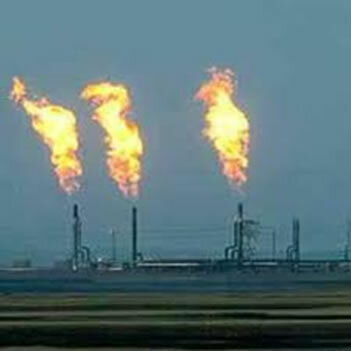THE non-renewable energy is a kind of exhaustible energy, which can originate from fossil fuels (oil, natural gas and coal) and uranium, used in nuclear energy.
THE non-renewable energy is also considered a type of dirty energy, as it causes damage to the environment and also to man, such as the destruction of ecosystems, global warming, acid rain, the greenhouse effect, among several other problems. Next, we will learn a little more about energies considered non-renewable.
Petroleum

Gasoline used in automobiles originates from petroleum
O Petroleum is a dark colored mineral oil that was formed millions of years ago from the accumulation of organic materials such as plants and animals decomposed underground. This fuel is widely used in the form of gasoline, diesel, kerosene, among others, which produce a lot of pollution, increasing the greenhouse effect. As we know, the Petroleum it is not a renewable source and if its use continues accelerated, it will end in the next 30 or 40 years.
Natural gas

Natural gas is a fossil fuel that pollutes the environment less
O natural gas, like oil, is also found underground, and was formed millions of years ago from the accumulation of organic material. It is a gas that pollutes less than oil and coal, but its burning also contributes to the greenhouse effect. O natural gas can be used in industries, homes, automobiles and commerce; and if this consumption rate is maintained, the reserves of natural gas could run out in 100 years.
Mineral coal

Coal began to be used as an energy source in the Industrial Revolution
O mineral coal it is an organic rock found in the terrestrial subsoil and extracted from there through mining. This fuel began to be used in the Industrial Revolution to power machines and locomotives, and nowadays it is used in the generation of electricity in thermoelectric plants. It is a form of energy that also pollutes the environment, contributing to the greenhouse effect and global warming.
Nuclear energy

The yellow symbol in the figure represents radioactivity.
In nuclear energy, also called atomic energy, there is the disintegration of the nucleus of the chemical element uranium (which has enough energy) to generate electricity. The big problem with this type of energy is that there is the production of highly radioactive waste, which must be treated, transported and isolated, strictly following various safety standards. The contact of this radioactive material with the environment can have disastrous consequences, causing countless diseases to human beings, such as cancer. Furthermore, this radioactive waste takes 50 to 250 years to lose all of its radiation. In Brazil, there are two nuclear power plants located in the state of Rio de Janeiro (Angra I and Angra II).
By Paula Louredo
Graduated in Biology


